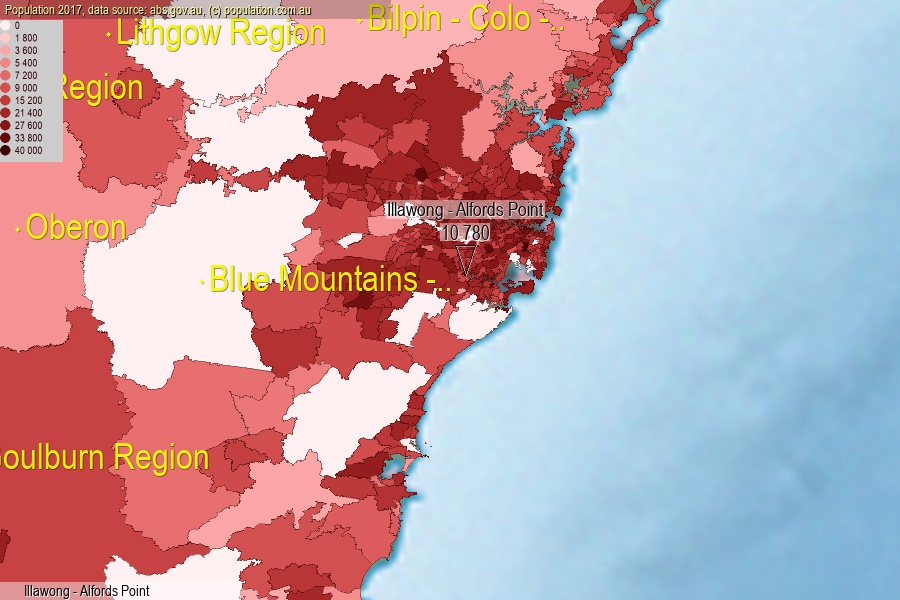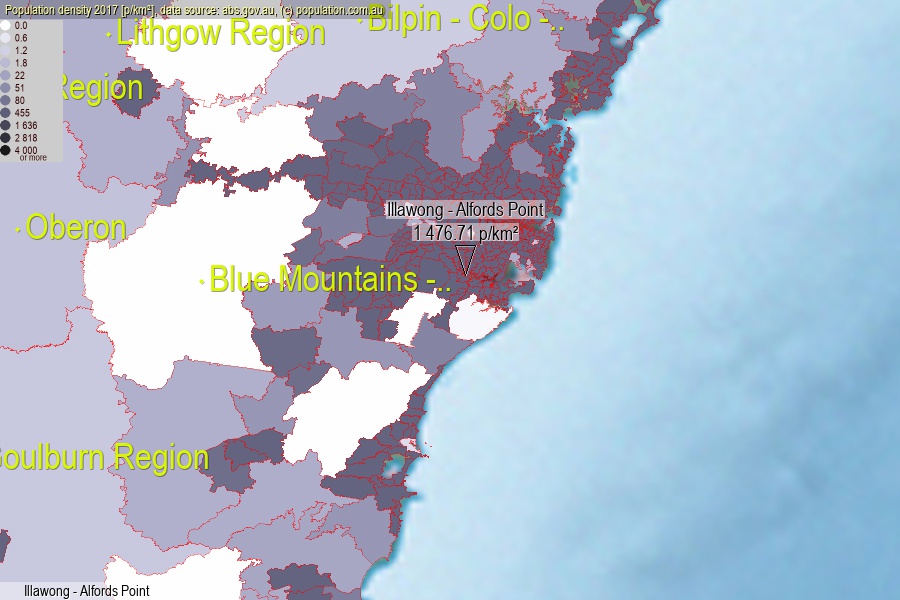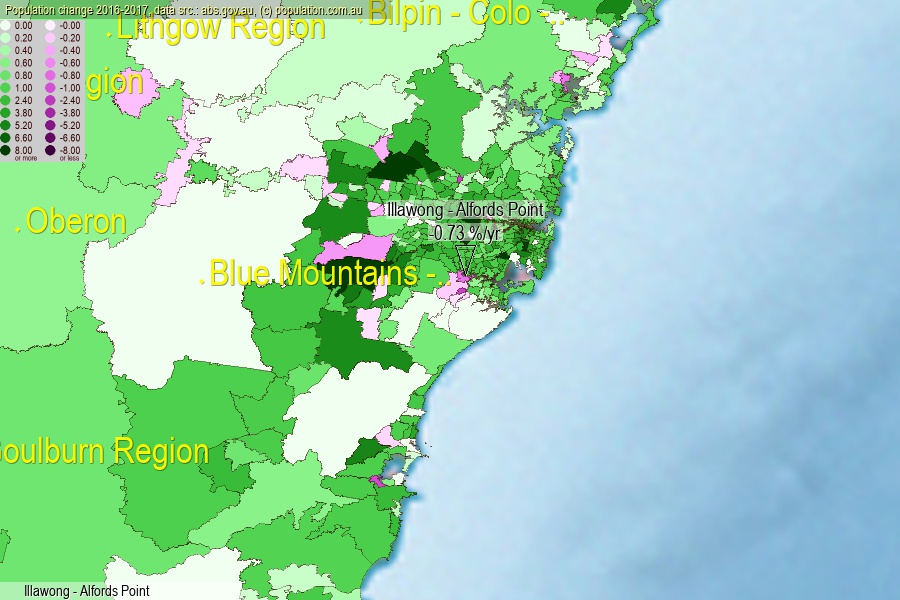 population.com.au
population.com.auLast official estimated population of Illawong - Alfords Point (as Statistical Area Level 2) was 10 780 people (on 2017-06-30)[2]. This was 0.04% of total Australian population and 0.135% of NSW population. Area of Illawong - Alfords Point is 7.30 km², in this year population density was 1 476.71 p/km² . If population growth rate would be same as in period 2016-2017 (-0.73%/yr), Illawong - Alfords Point population in 2025 would be 10 168. [0]



Click to enlarge. Illawong - Alfords Point is located in the center of the images.
Population [people], population density [p./km²] and population change [%/year] [2]
View borders » (new window) [4]
[1991-1992] +5.74 %/Yr.
[1992-1993] +3.14 %/Yr.
[1993-1994] +4.65 %/Yr.
[1994-1995] +3.68 %/Yr.
[1995-1996] +4.78 %/Yr.
[1996-1997] +0.97 %/Yr.
[1997-1998] +0.69 %/Yr.
[1998-1999] +0.92 %/Yr.
[1999-2000] +1.20 %/Yr.
[2000-2001] +1.32 %/Yr.
[2001-2002] -1.22 %/Yr.
[2002-2003] -1.48 %/Yr.
[2003-2004] -1.50 %/Yr.
[2004-2005] -1.16 %/Yr.
[2005-2006] -1.51 %/Yr.
[2006-2007] +1.07 %/Yr.
[2007-2008] +1.05 %/Yr.
[2008-2009] +0.19 %/Yr.
[2009-2010] -0.61 %/Yr.
[2010-2011] -1.40 %/Yr.
[2011-2012] -0.63 %/Yr.
[2012-2013] -0.55 %/Yr.
[2013-2014] -0.52 %/Yr.
[2014-2015] -0.74 %/Yr.
[2015-2016] -0.92 %/Yr.
[2016-2017] -0.73 %/Yr.
[0] Calculated with linear interpolation from officially estimated population
[1] Read more about SA2 and Australian Statistical Geography Standard (ASGS) on abs.gov.au
[2] Population data from Australian Bureau of Statistics (Population and density: 2017; change: 2016-2017)
[3] Digital Boundaries: Australian Statistical Geography Standard (ASGS) 2016.
[4] Border coordinates are simplifyed using Ramer-Douglas-Peucker algorithm.